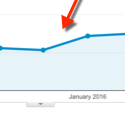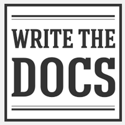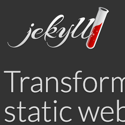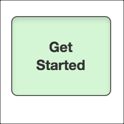In early 2016 Google updated their search algorithm to reward sites with good content. I benefitted from this update and saw my blog's traffic jump up about 15,000 extra hits per month.
Tomorrow (June 23, 2016) the Write the Docs meetup group in San Francisco is holding a meetup focused on helping each other solve tech comm problems. The meetup theme is called Solve This!. If you're in the Bay area, definitely check it out.
I often hear tech writers in developer doc say they don't use a lot of visuals because users just want code samples. While code samples certainly connect well with users, there's also room to clarify difficult concepts through conceptual illustrations. The Android Vocabulary Glossary provides a perfect example of this.
A while ago, Cory Lebson, a seasoned user experience consultant, invited me to write a chapter on technical communication in part of his upcoming UX Careers Handbook. The book was just published and is now available for order. My chapter provides a detailed introduction to technical writing for any beginning trying to transition into this field.
Although the basic Markdown syntax can be pretty limiting, you can create more sophisticated HTML syntax and store it in templates. Using include syntax, you can pass parameters into these templates. This allows you to leverage more advanced HTML formatting (or other logic) without having to introduce the same level of complexity into your page authoring.
For more complex user process maps, you can group the associated topics into larger collections. When users click a workflow step, you can show them all the relevant topics within that collection. This approach accommodates a more complex user process workflow.
We're looking to add a couple of technical writers to our Appstore documentation team at Amazon in the Seattle and Sunnyvale locations. If you're interested, contact me. The focus is on developer documentation, so you'll need to be comfortable documenting web services.
Maps are an essential tool for helping users navigate unfamiliar territory. Providing maps to users is the 101 of visual communication — these maps helps guide through the overgrown documentation forest, especially when users are trying to complete procedures that require them to visit multiple pages, or take different paths through the [undergrowth] content. The map is as essential to end-users as it is to hikers on an unfamiliar trail.
The following is a guest post by Jeanine Shepstone. In this post, Jeanine talks about some of the issues technical writers face when translating images in technical documentation. She outlines the workflows for both text translation and image translation, and the challenges of extracting, translating, and merging text back into images. Image translation is certainly one of the most difficult aspects of tech comm, and for this reason many people avoid it and stick with text only.
The following is a guest post by Jeanine Shepstone. In this post, Jeanine talks about some of the issues that images present with tech docs. For example, sorting out references to the images, single sourcing re-used images, converting SVG image formats to ensure browser compatibility, and ensuring the right file size for optimal page loading are some of the challenges that tech writers face when working with images in tech docs.
During the May WTD meetup, Ruthie Bendor, a web engineer, gave a presentation titled Move Fast And ... Document Things? Lessons learned in building documentation culture at a startup. This post contains the audio and video recording of her presentation.
We recently hosted a Write the Docs meetup in Redwood City with a couple of excellent presenters. A recording of Ruthie Bendor's presentation is below.
We recently hosted a Write the Docs meetup in Redwood City with a couple of excellent presenters. Below is the recording of Neal Kaplan's presentation. I also explain a bit about my new lapel mic and recording process.
I attended the 2016 STC Summit in Anaheim, California this year. This is a brief, rambling post that recaps some of my thoughts and experiences.
Here are the slides for my STC Summit 2016 talk on Writing Tech Docs Like a Hacker with Jekyll presentation. In this presentation, I introduce the tech comm conference attendees to Jekyll and how it can be used for authoring technical documentation. I'll try to demo a few of the tasks I describe.















